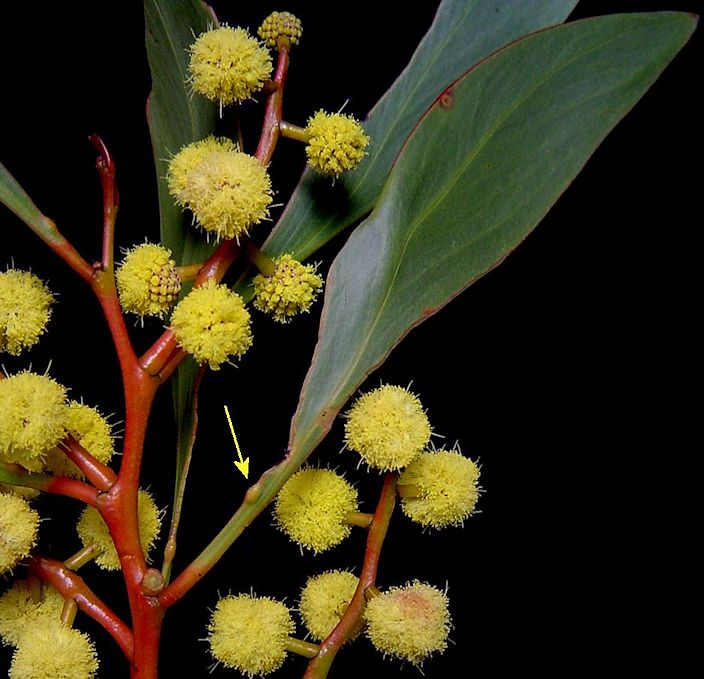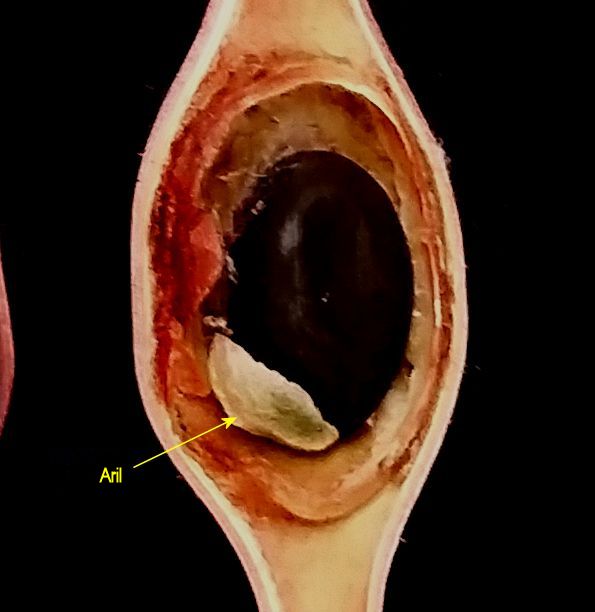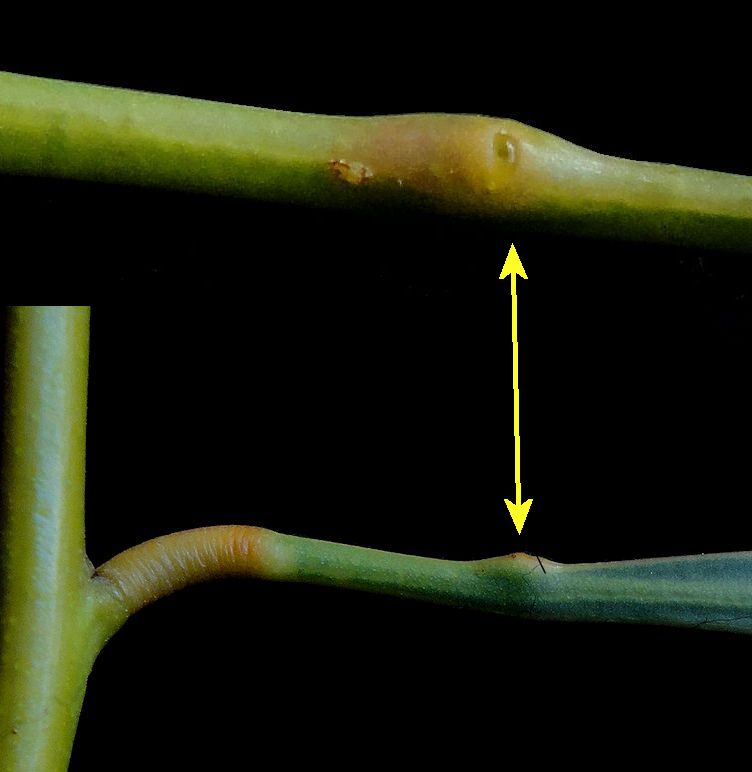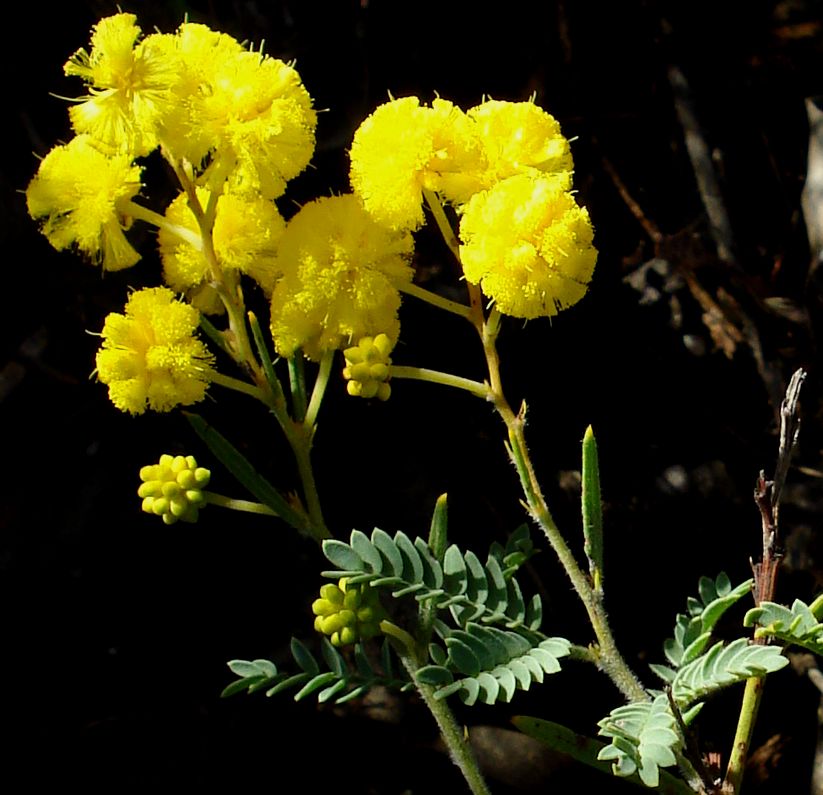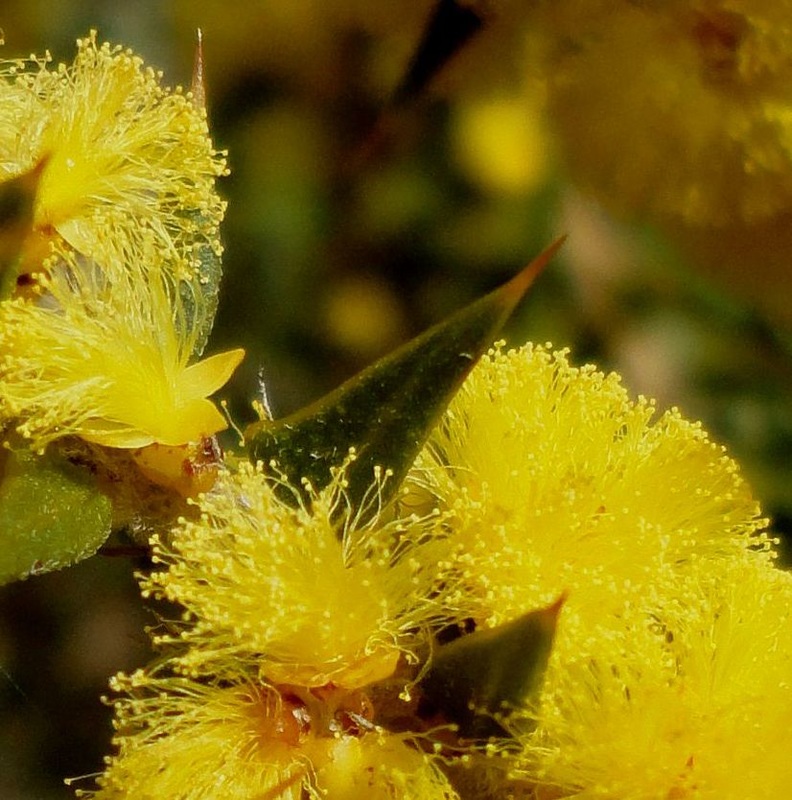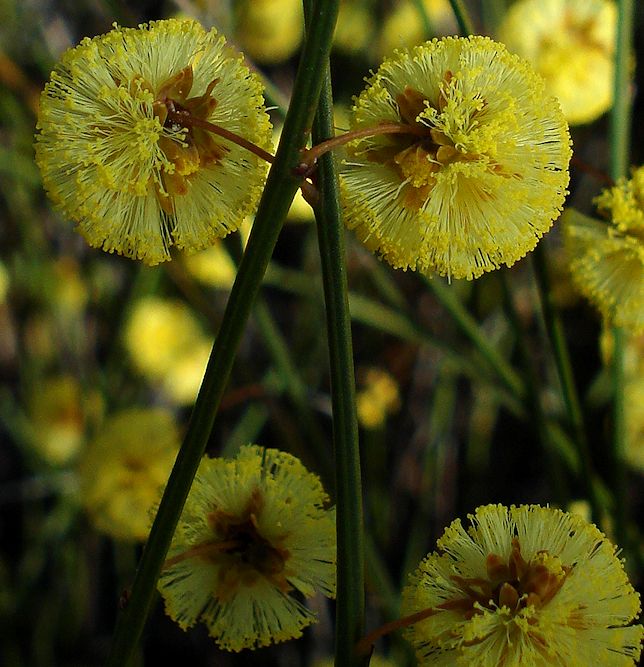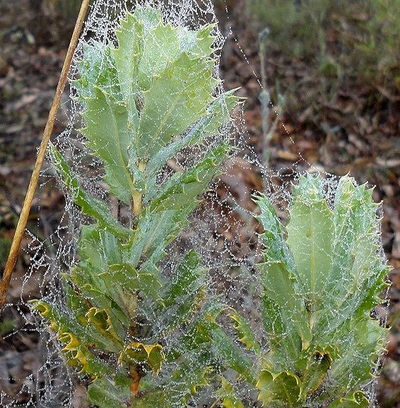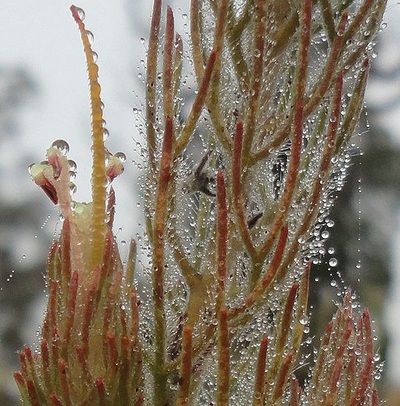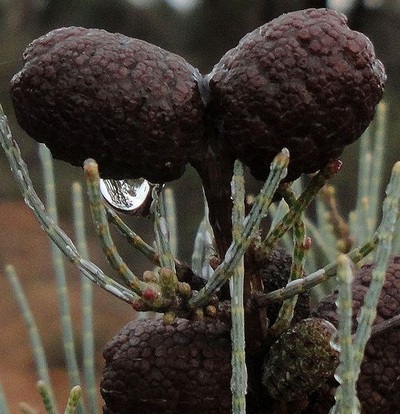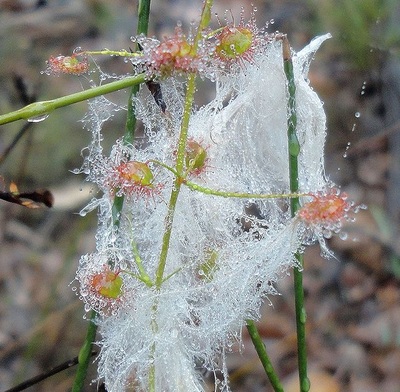Wattles are really tough plants that are widespread in low rainfall areas as mulgas and wodjils.
Foxes Lair plants below illustrate key wattle features
1. White, yellow and orange flowers that have tiny petals and profuse stamens.
2 All wattle seedlings have bipinnate leaves (containing 2 rows of leaflets); many overseas and some Australian species like Acacia insolita also have them as adults. Most Australian species have dispensed with leaves, and have developed modified stems called phyllodes, that are more heat and drought resistant. They may look like leaves but include needles straps, hooks or other shapes.
3. Many overseas species are very thorny to deter grazing animals. Relatively few Australian species are thorny, but examples are Prickly Moses (A. lasiocarpa) and A. chrysocephala.
4. Wattles have a small fleshy appendage called an aril that is attached to a seed, and may partially or entirely envelope a seed. This is a cunning survival mechanism as it is edible and attractive to birds that disperse the seed in their droppings, and to ants. Ants take the seed down into their nests and eat the aril, leaving the seed ready to germinate
Australia’s floral emblem Acacia pycnantha (Golden wattle) illustrates other wattle features.This beautiful plant is flowering now around Narrogin, but hopefully not in Foxes Lair as yours truly exterminates any on sight. It is an south-eastern state plant that is an aggressive competitor in WA. The leaf-like phyllodes have visible veins. Note the 'bump' near the base of the phyllode that is a nectar gland. Ants attracted by a drink of nectar deter plant-eating insects and bugs
